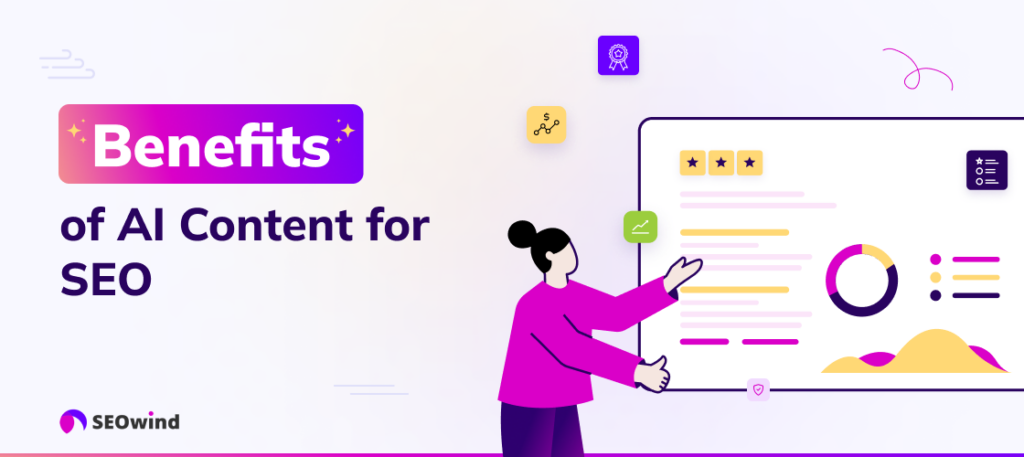Unlock the secrets to maximizing SEO performance by editing AI-generated content! Stay ahead of the competition with these expert tips.

Image courtesy of via DALL-E 3
Table of Contents
Introduction: What is AI-Generated Content?
AI-generated content is a fascinating concept that involves using artificial intelligence (AI) to create written material. Think of AI as a super-smart robot that can generate text just like a human. This AI can write articles, product descriptions, blog posts, and more, all without any human intervention. It’s pretty cool, right?
Understanding AI and Content Creation
Imagine having a robot friend who can write stories or reports for you. That’s what AI does! It learns from a lot of examples and then creates its own unique content. So, when you read AI-generated content, you’re reading something written by a computer program, not a person.
Why Editing is Important
Editing is crucial when it comes to AI-generated content for a couple of important reasons. Firstly, while AI is super smart, it can still make mistakes or write things in a weird way. Editing helps fix those mistakes and make the content sound more natural. Secondly, editing can also improve the content so that it ranks higher in search engines like Google. That’s where SEO (Search Engine Optimization) comes into play, helping people find the content more easily.
Step 1: Read the AI-Generated Content
When you have AI-generated content in front of you, the first step is to read through it carefully. This is important because you need to understand what the AI has created and what improvements can be made to enhance its quality and SEO performance.
Finding Mistakes
To start, look for any errors or awkward phrases in the content. These could be spelling mistakes, grammatical errors, or sentences that simply don’t make sense. By identifying and correcting these mistakes, you can make the content clearer and more engaging for your readers.
Understanding the Flow
As you read through the AI-generated content, pay attention to how the information flows from one point to the next. Make sure that the content is logically organized and that each sentence follows on smoothly from the previous one. A good flow will make the content easier to read and understand for your audience.
Step 2: Focus on Keywords
One of the key aspects of optimizing AI-generated content for SEO is to focus on using the right keywords. Keywords are words or phrases that people type into search engines when looking for information. By incorporating relevant keywords into your content, you can improve its visibility and ranking on search engine results pages.
Image courtesy of www.skyword.com via Google Images
Finding Important Keywords
Start by identifying which keywords are crucial for your topic. Think about what terms your target audience is likely to use when searching for information related to your content. You can use keyword research tools to help you discover popular keywords and phrases that are relevant to your topic.
Adding Keywords Naturally
Once you have identified your target keywords, it’s essential to incorporate them naturally into your AI-generated content. Avoid keyword stuffing, which is the practice of overloading your content with keywords in an unnatural way. Instead, focus on integrating your keywords in a way that feels organic and seamless. This will not only improve the readability of your content but also enhance its SEO performance.
Step 3: Improve Readability
One way to make your writing easier to read is by using shorter sentences. Long sentences can confuse the reader, so breaking them up can help them understand your message better. Instead of packing too many ideas into one sentence, try to keep it simple and concise. This way, your reader won’t get lost in a sea of words.
Using Simple Words
Another way to improve readability is by using simple words that everyone can understand. Fancy, complicated words might sound impressive, but they can make your content hard to grasp. Imagine explaining your ideas to a younger sibling or a friend who doesn’t know much about the topic. By using everyday language, you can ensure that your message is clear and easy to follow.
Step 4: Check for Relevance
Now that you have improved the readability of the content and optimized it with the right keywords, it’s crucial to ensure that the information provided stays relevant to the topic at hand. This means keeping the focus on the main subject and avoiding veering off into unrelated areas.

Image courtesy of www.leewayhertz.com via Google Images
When checking for relevance, ask yourself if each paragraph contributes to the main idea you want to convey. If you find any sections that seem to stray from the topic, consider either refining them to align with the core message or removing them altogether.
Providing Useful Information
In addition to staying on topic, it’s important to provide valuable and informative content to your readers. This can involve backing up your points with facts, statistics, or real-life examples that enhance the reader’s understanding and engagement with the material.
Remember, your goal is not just to fill space with words but to offer insights and knowledge that your audience will find beneficial. By adding relevant and useful information, you can establish your credibility as a reputable source and increase the likelihood of your content being shared and referenced by others.
Step 5: Add Visuals
Now that you’ve improved the readability and relevance of your AI-generated content, it’s time to enhance it further by adding visuals. Images and graphics not only make your content more engaging for readers but also play a crucial role in improving your SEO performance. When selecting images to accompany your text, make sure they are directly related to the topic you’re covering. For example, if you’re writing about the benefits of cycling, including pictures of bikes, cyclists, and scenic bike trails can help reinforce your message.
Alt Text for Images
In addition to choosing relevant images, it’s important to optimize them for search engines by adding descriptive alt text. Alt text, short for alternative text, is a brief description of an image that appears when the image cannot be displayed. Search engines use alt text to understand the content of an image, so make sure your alt text accurately describes the image and includes relevant keywords. For instance, if your image shows a delicious vegan meal, your alt text could be something like “Healthy vegan bowl with fresh vegetables and quinoa.”
Final Proofread
Before finalizing your AI-generated content, it’s crucial to give it a thorough check for grammar and spelling errors. Simple mistakes in punctuation or misspelled words can make your content appear unprofessional and may harm your SEO performance. Take your time to review each sentence carefully.

Image courtesy of seowind.io via Google Images
Ensuring Clear Meaning
Another essential step in the final proofreading process is ensuring that each sentence conveys a clear and understandable message. Ambiguous or confusing language can deter your readers and affect your search engine ranking. Make sure that the content flows logically and that your ideas are presented in a coherent manner.
Conclusion: Wrapping It Up
In conclusion, editing AI-generated content holds the key to unlocking peak SEO performance. By following the steps outlined in this guide, you can significantly enhance the quality and effectiveness of your content. Let’s recap the essential points we’ve covered.
Recap of Steps
We started by understanding what AI-generated content is and why human editing is crucial for enhancing its SEO impact. We then learned the importance of reading through the initial AI copy to identify errors, improve flow, and enhance readability. Next, we delved into the significance of focusing on the right keywords and ensuring they are seamlessly integrated into the content.
Additionally, we explored the importance of maintaining relevance, providing valuable information, incorporating visuals effectively, and conducting a final proofread to polish the content. These steps collectively contribute to elevating the overall quality and engagement of AI-generated content.
The Importance of Good Editing
Good editing serves as the cornerstone of successful SEO strategies. It ensures that your content not only ranks well on search engines but also resonates with your target audience. By meticulously reviewing and refining AI-generated content, you can elevate its quality, relevance, and readability, thereby maximizing its potential impact on your online visibility and audience engagement.
Want to turn these SEO insights into real results? Seorocket is an all-in-one AI SEO solution that uses the power of AI to analyze your competition and craft high-ranking content.
Seorocket offers a suite of powerful tools, including a Keyword Researcher to find the most profitable keywords, an AI Writer to generate unique and Google-friendly content, and an Automatic Publisher to schedule and publish your content directly to your website. Plus, you’ll get real-time performance tracking so you can see exactly what’s working and make adjustments as needed.
Stop just reading about SEO – take action with Seorocket and skyrocket your search rankings today. Sign up for a free trial and see the difference Seorocket can make for your website!
FAQs
What is AI-generated content?
AI-generated content is material produced by artificial intelligence, which is a smart computer system. This content is created by programs that can write articles, stories, or social media posts without human involvement. It’s like having a robot writer!
Why does AI-generated content need to be edited?
AI-generated content needs to be edited because although AI is smart, it’s not perfect. Human editors can spot mistakes, make sentences flow better, and check that the content is easy to understand. Editing makes sure the content is top-notch and helps it show up higher in search results on the internet.
What happens if I don’t edit AI-generated content?
If you don’t edit AI-generated content, there might be errors or confusing sentences that could turn off readers. This can lead to lower search engine rankings, meaning fewer people will see the content. Editing is like giving the final polish to make sure the content shines brightly online!







